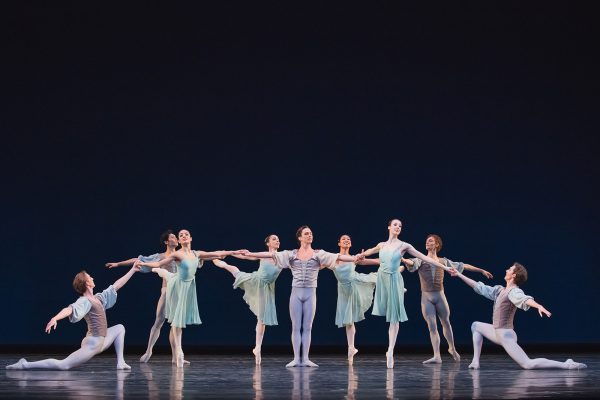When the lights go down at the beginning of The Black Piece by Ann Van den Broek, they stay down. True to the title, the Dutch choreographer plunges both the audience and the performers into obscurity and leaves us there. The darkness isn’t perfect — exit signs and stair lighting reduce pitch-blackness to deep shadows — but it is enveloping, and surprisingly electric.
Through this nighttime setting, two roving points of light search out the dancers. One is Van den Broek carrying a flashlight, and the other is Thorston Alofs, a cinematographer operating a live camera that syncs real-time to a screen at the back of the stage. Together, they are our guides to this sexy, scary underworld, where elements of vampire chic, 1980s Clash and tragic emo blend together.
Except for a few brief interludes when the lights come on and the dancers line up at the front of the stage to execute synchronized full-body movements with quaking intensity, the video draws most of the focus. In it, the performers swim out of the darkness like spectral figures rising up from the bottom of a lake, their skin brightly illuminated on the screen. Meanwhile, Van den Broek’s flashlight throws their hulking shadows far up on the wall, and through ingenious applications of contact mics, a live percussive soundtrack made of breath and body draws us on a relentless rhythm through all eighty minutes of the performance.
Each aspect of the stagecraft — the video, the audio and the lighting — serves to distort the audience’s sense of scale, creating the feeling that what lurks in the shadows is too big and too close for comfort. But most importantly, the intricate staging best serves the dancers, whose movements are made more crisp and precise by the encroaching darkness. Blackness creates an intriguing context, in which fear and comfort form a strange alliance, but the most interesting story in this piece is what happens when a little light finds us.
Tagged: Choreography, Contemporary, Performance, QC





